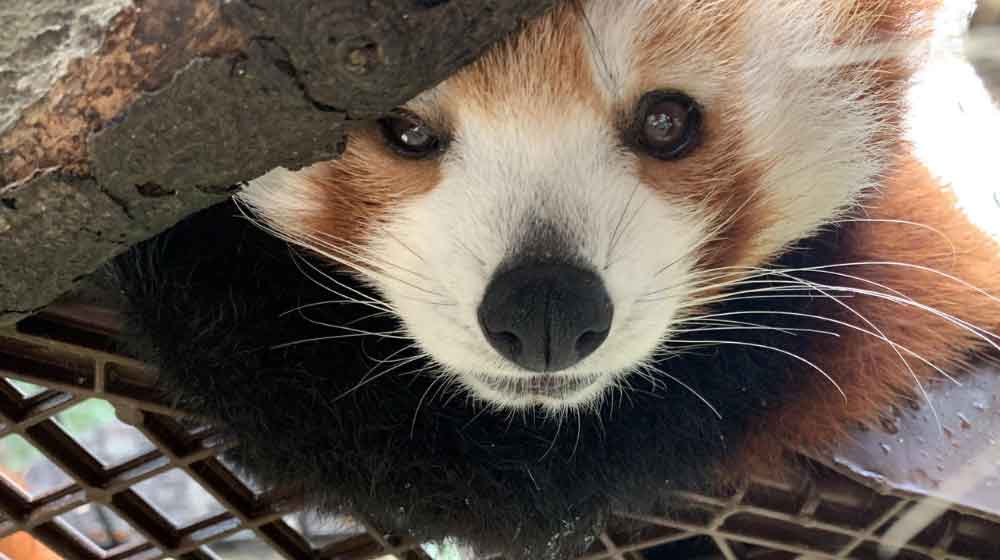Red Panda
AILURUS FULGENS FULGENS

HABITAT
Bamboo forests in high elevations
GEOGRAPHIC REGION AND RANGE
Red pandas are found in China (in the provinces of Sichuan, Yunnan, and Xizang), Nepal, Bhutan, and northern Myanmar.
DIET
Mostly bamboo leaves and shoots, also berries, leaves, acorns, flowers, eggs, insects and grubs.
PHYSICAL DESCRIPTION
Red to orange body, with white facial markings, brown to black belly and legs, and a white striped tail.
LIFESPAN
Natural Habitat: 8-10 years
Under Human Care: 13-18 years
THREATS
Red panda populations have declined approximately 50% in the last 20 years. It is estimated that as few as 2,500 remain in the wild. Their biggest threats are habitat loss and fragmentation (the splitting of large forest into smaller inaccessible fragments) caused by logging and clearing forests to make room for human settlements and roads.
STATUS
Endangered
FUN FACTS
The word panda is derived from a Nepalese term ‘ponva’ for “eater of bamboo”.
The Chinese name for the red panda is “HUNHO,” which in English means firefox.
Red Pandas are the original panda! Frédéric Cuvier, a French zoologist, first described the red panda in 1825, about 48 years before the giant panda was cataloged.
Red pandas are most closely related to raccoons, but they are the only living species in their taxonomic family.
Males leave a scent track that they secrete from the pads of their feet.
What are AZA Zoos doing for Red Pandas?
Their zoo population is managed through conservation breeding programs called Species Survival Plan programs, which ensures genetic diversity and species health. There are around 200 individual red pandas at 85 AZA-accredited facilities. AZA zoos fund and participate in field research focusing on learning about red panda ecology, tracking wild populations and genetics, teaching local people ways to protect pandas, and partnering with targeted conservation organizations.

